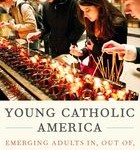
Two issues here will be most interesting to watch. One will be, with the popularity of Pope Francis in Latin American and among U.S. Latinos/as, will that stem the long-standing tide of Latinos/as leaving the Church? The other will be broadly, what can about the “nones?” What is going to happen to those who’ve left all branches of Christianity and can there be anything done to get them back?
A couple of recent works have tackled this issue on a local and national level in terms of Catholicism. One excellent special report about Catholics in Chicago.
The loss of Catholicism in its traditional strongholds of the big cities across the U.S. will be quite revolutionary for the Church in the coming years.
The other work, a more in-depth and scholarly work from noted sociologist of religion, Christian Smith, makes some common sense observations about how people maintain faith. Smith followed 700 Catholic young people and found the following: in order to remain in the Catholic Church, teens needed the following: 1) strong bonds with religiously committed friends and family 2) internalize their beliefs and 3) faith internalized had to be practiced in continuous patterns that diminished the secular influences of their surroundings and established ongoing Catholic practices and values.
Since speculating on what faith is, how identities form, and how they are often in flux, is what I do for a living. All, I can say, is that faith is contradictory, it is not adopted as readily as religious institutions would like. Perhaps my reasons for posting this are simply to note that the mysteries of faith in this case divide progressives who want the Church to focus on social justice issues and traditionalists who must shudder every time Pope Francis utters something a bit too radical. This ideological divide played out among Catholics, evangelicals, and others, fails in terms of one glaring flaw; assuming Latinos/as are a monolithic group that can be attracted by some tweaking of theology or practice. Assuming that Latinos/as think white, and only act like Latinos/as if they haven’t been sufficiently assimilated yet. That overarching idea, rooted in the assimilationist models of church life that still capture most or all parts of American Christianity may be one of a number of reasons why the “nones” continue to grow and why despite the desire to keep Latinos/as in the fold, young Latinos/as continue to walk away.












